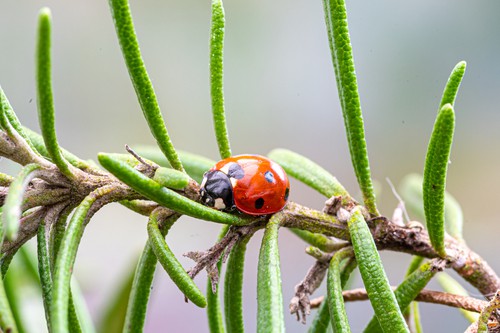Rosemary is a popular herb that is commonly used in cooking and has a distinct aroma that makes it a favorite among chefs and home cooks alike. However, one of the most common problems that gardeners face with rosemary is the appearance of black spots on the leaves.
These black spots can be unsightly and may indicate a problem with the plant’s health.
Understanding the causes of black spots on rosemary leaves is crucial in preventing and treating the problem. While overwatering and pests are common culprits, fungal diseases such as Botrytis, black spot, and root rot can also cause rosemary leaves to turn black.
Identifying the specific disease or pest that is affecting the plant is essential in determining the appropriate treatment and preventive measures to take.
Key Takeaways
- Black spots on rosemary leaves can be caused by overwatering, pests, and fungal diseases such as Botrytis, black spot, and root rot.
- Identifying the specific disease or pest that is affecting the plant is crucial in determining the appropriate treatment and preventive measures to take.
- Preventive measures such as proper watering, good air circulation, and regular pruning can help prevent black spots on rosemary leaves.
Also read:
Understanding Black Spots on Rosemary Leaves
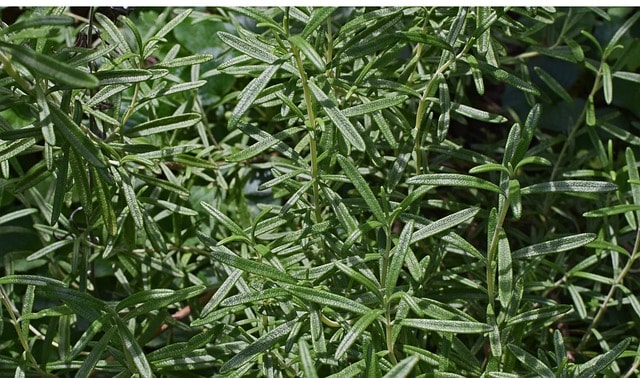
Rosemary is a popular herb that is commonly used in cooking and has many health benefits. However, sometimes rosemary leaves can develop black spots, which can be a cause for concern. In this section, we will discuss the causes of black spots on rosemary leaves and how to prevent them.
Black spots on rosemary leaves are usually caused by fungal diseases, such as Botrytis, black spot, and leaf spot. These diseases are caused by fungal pathogens that thrive in damp conditions and can be spread by fungal spores. When these spores land on the leaves of rosemary, they can cause black spots to form.
One of the main causes of fungal diseases in rosemary is overwatering. When the soil around the roots of the plant is constantly wet, it creates the perfect environment for fungal pathogens to grow. To prevent this, it is important to make sure that the soil is well-draining and that the plant is not overwatered.
Another way to prevent fungal diseases in rosemary is to make sure that the plant is getting enough air circulation. Fungal spores can spread quickly in humid conditions, so it is important to make sure that the plant is not overcrowded and that there is enough space for air to circulate.
If you notice black spots on your rosemary leaves, it is important to act quickly to prevent the spread of the fungal disease. Remove any infected leaves and make sure to dispose of them properly. You can also treat the plant with a fungicide to prevent the spread of the disease.
In summary, black spots on rosemary leaves are usually caused by fungal diseases that thrive in damp conditions. To prevent these diseases, it is important to make sure that the soil is well-draining, the plant is not overwatered, and there is enough air circulation.
If you notice black spots on your rosemary leaves, remove any infected leaves and treat the plant with a fungicide to prevent the spread of the disease.
Black Spots on Rosemary Leaves – 4 Common Problems
Rosemary plants are susceptible to black spots on their leaves, which can be caused by various factors. Understanding the common causes of black spots can help gardeners identify and prevent this issue from occurring.
1. Fungal Diseases

Fungal diseases such as root rot, Botrytis, and black spot can all cause rosemary leaves to develop black spots. These diseases thrive in damp soil around the roots or in high humidity conditions.
To prevent fungal diseases, gardeners should avoid overwatering and ensure that the soil has good drainage. In addition, pruning the plant to increase air circulation and avoiding overhead watering can also help prevent fungal diseases.
2. Overwatering and Poor Drainage
Overwatering and poor drainage are common causes of black spots on rosemary leaves. When the soil around the roots is too wet, it can lead to root rot and other fungal diseases.
Gardeners should only water rosemary plants when the soil is dry to the touch, and ensure that the soil has good drainage to prevent water from accumulating around the roots.
3. High Humidity and Temperature
High humidity and temperature can also cause black spots on rosemary leaves. These conditions create a favorable environment for fungal diseases to thrive. To prevent this issue, gardeners should ensure that the plant is located in an area with good air circulation and plenty of sunlight.
In addition, they can use a dehumidifier to reduce the humidity level in the air.
4. Insect Infestation
Insect infestations can also cause black spots on rosemary leaves. Common pests that can infest rosemary plants include mites, whiteflies, mealybugs, thrips, aphids, spider mites, spittlebugs, and spiders.
These pests can damage the leaves and create small black spots. To prevent insect infestations, gardeners should inspect their plants regularly and use insecticidal soap or neem oil to control the pests.
In summary, black spots on rosemary leaves can be caused by fungal diseases, overwatering and poor drainage, high humidity and temperature, and insect infestations.
Gardeners should take steps to prevent these issues by ensuring that the plant is located in an area with good air circulation and plenty of sunlight, avoiding overwatering, and using insecticidal soap or neem oil to control pests.
Identifying Specific Diseases and Pests
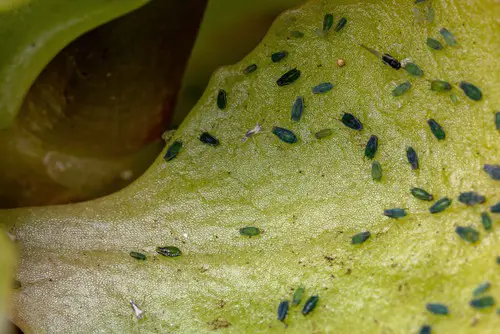
Rosemary is susceptible to a variety of diseases and pests that can cause black spots on its leaves. Identifying the specific issue is crucial to implementing the correct treatment. Here are some common diseases and pests that can cause black spots on rosemary leaves:
1. Black Spot and Leaf Spot
Black spot and leaf spot are fungal diseases that can cause black spots on rosemary leaves. These diseases are caused by a fungus that thrives in warm and humid conditions.
The fungus can spread quickly and cause significant damage if left untreated. Symptoms of black spot and leaf spot include black or brown spots on the leaves, yellowing of the leaves, and premature leaf drop.
To prevent black spot and leaf spot, ensure that the rosemary plant is placed in a well-ventilated area and not overwatered. If the disease is already present, prune the infected leaves and apply a fungicide according to the package instructions.
2. Root Rot
Root rot is a fungal infection that affects the roots of the rosemary plant. The fungus thrives in wet soil and can cause the roots to rot, making it difficult for the plant to absorb nutrients and water. Symptoms of root rot include blackened roots, stunted growth, and yellowing leaves.
To prevent root rot, make sure the soil is well-draining and not overwatered. If the disease is already present, prune the infected roots and dust with fungicide powder.
3. Mildew and Mold
Mildew and mold are fungal diseases that can cause black spots on rosemary leaves. These diseases are caused by a fungus that thrives in humid conditions. Symptoms of mildew and mold include a white or gray powdery coating on the leaves, yellowing of the leaves, and premature leaf drop.
To prevent mildew and mold, ensure the rosemary plant is placed in a well-ventilated area and not overwatered. If the disease is already present, prune the infected leaves and apply a fungicide according to the package instructions.
4. Insect-Related Diseases
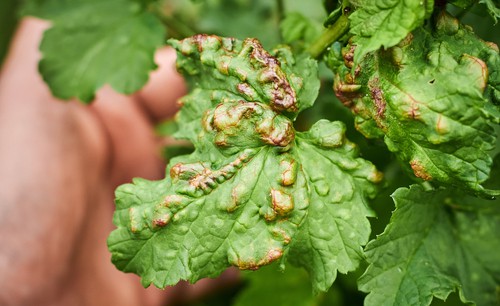
Insect-related diseases can also cause black spots on rosemary leaves. Common pests that can cause these diseases include aphids, spider mites, and whiteflies. These pests can damage the leaves, causing black spots to appear.
Symptoms of insect-related diseases include black spots on the leaves, yellowing of the leaves, and distorted growth.
To prevent insect-related diseases, regularly inspect the rosemary plant for pests and treat them with insecticides or natural remedies. Prune the infected leaves and discard them to prevent the spread of the disease.
Preventive Measures and Treatment
1. Proper Watering and Drainage
Proper watering and drainage are crucial in preventing black spots on rosemary leaves. Overwatering can lead to root rot, which is a common cause of black spots. To prevent this, make sure the soil is well-draining and not waterlogged.
Water the plant only when the top inch of soil is dry to the touch. Avoid overhead watering, which can promote fungal growth.
2. Temperature and Humidity Control

Rosemary is native to the Mediterranean and prefers warm, dry climates. High humidity can promote fungal growth, which can cause black spots on the leaves. To prevent this, make sure the plant is in a well-ventilated area.
Avoid placing it in a humid environment, such as a bathroom or kitchen. Keep the temperature between 60 and 80 degrees Fahrenheit.
3. Fungicide Use
If black spots have already appeared on the leaves, a fungicide may be necessary. There are several types of fungicides available, including organic fungicide sprays, horticultural oils, and neem oil. Follow the instructions carefully when applying fungicides. Be sure to cover both the top and bottom of the leaves.
4. Insect Control
Insects can also contribute to the development of black spots on rosemary leaves. Insecticidal soap and horticultural oils are effective in controlling pests such as spider mites and whiteflies. For more severe infestations, consider using pesticides. However, be sure to read the label carefully and follow the instructions.
Overall, proper care and maintenance can go a long way in preventing black spots on rosemary leaves. Regularly inspect the plant for signs of disease or pests. If caught early, the problem can be treated before it becomes severe.
Caring for Rosemary Plants
1. Understanding Soil and Sunlight Requirements

Rosemary plants are native to the Mediterranean region and require well-draining soil with a pH between 6.0 and 7.0. They thrive in full sun with at least six hours of direct sunlight per day.
When planting rosemary, it is important to amend the soil with horticultural sand or grit to improve drainage and mimic the soil conditions of the Mediterranean.
In addition to proper soil conditions, it is important to ensure that rosemary plants receive proper air circulation and are not over-watered. Over-head watering can lead to standing water around the plant, which can cause root rot and other diseases. Instead, it is recommended to water rosemary plants at the base and allow for evaporation.
2. Maintaining Plant Health
To maintain the health of rosemary plants, it is important to monitor their growth and address any issues promptly. Regularly inspect the plants for signs of pests or diseases, such as black spots on the leaves. If pests or diseases are present, it is important to treat them with appropriate measures, such as insecticides or fungicides.
In addition to pest and disease management, it is important to prune rosemary plants regularly to promote bushy growth and prevent woody stems. Pruning can also help to prevent overcrowding and improve air circulation around the plant.
3. Winter Care
Rosemary plants are hardy and can survive winter temperatures as low as 20°F (-6°C). However, it is important to protect them from harsh winter winds and excessive moisture.
During the winter season, it is recommended to move potted rosemary plants indoors to a bright location with plenty of natural light. In-ground plants can be covered with a layer of mulch to protect the roots from freezing.
Overall, caring for rosemary plants requires attention to their specific soil and sunlight requirements, as well as regular monitoring and maintenance to ensure their health and longevity.
Home Remedies for Black Spots
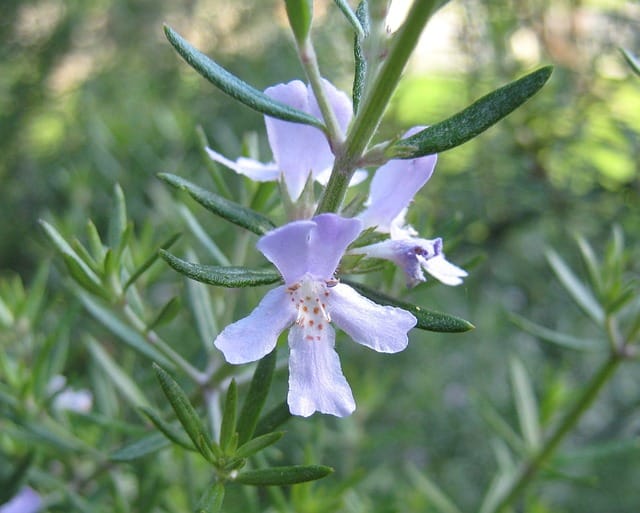
Black spots on rosemary leaves can be a frustrating issue for gardeners, but there are several home remedies that can help address the problem. Here are a few options to consider:
1. Baking Soda Solution
Baking soda is a versatile ingredient that can be used for a variety of household cleaning tasks, and it can also be helpful in treating black spots on rosemary leaves. To make a baking soda solution, mix one tablespoon of baking soda with one gallon of water.
Transfer the mixture to a spray bottle and apply it to the affected plant leaves. Repeat the process every two weeks until the black spots disappear.
2. Milk Solution
Milk is another surprising ingredient that can be used to treat black spots on rosemary leaves. To make a milk solution, mix one part milk with two parts water. Transfer the mixture to a spray bottle and apply it to the affected plant leaves. Repeat the process every two weeks until the black spots disappear.
3. Vegetable Oil
Vegetable oil can be used to help prevent black spots from forming on rosemary leaves. Simply mix one tablespoon of vegetable oil with one gallon of water. Transfer the mixture to a spray bottle and apply it to the plant leaves. This will help create a protective barrier that can prevent black spots from forming.
4. Eucalyptus Oil
Eucalyptus oil is a natural insecticide that can help prevent black spots on rosemary leaves caused by pests. To use, mix one tablespoon of eucalyptus oil with one gallon of water. Transfer the mixture to a spray bottle and apply it to the plant leaves. This will help repel pests and prevent black spots from forming.
Overall, these home remedies can be effective in treating and preventing black spots on rosemary leaves. However, it’s important to note that prevention is key. Make sure to keep your rosemary plants healthy and well-watered, and avoid over-fertilizing or over-watering.
By taking good care of your plants, you can help prevent black spots from forming in the first place.
Frequently Asked Questions
Can you still use rosemary leaves with black spots?
Yes, you can still use rosemary leaves with black spots. However, it is recommended to remove the affected leaves and discard them to prevent the spread of the fungal disease to other parts of the plant.
Why are there black spots on my rosemary leaves?
Black spots on rosemary leaves are usually caused by fungal diseases such as black spot, cercospora leaf spot, and powdery mildew. These diseases are often caused by high humidity, damp soil, or lack of proper air circulation.
How do I prevent black spots from forming on my rosemary leaves?
To prevent black spots from forming on your rosemary leaves, make sure to plant them in well-draining soil and avoid overwatering. Provide adequate air circulation and avoid planting them in areas with high humidity. You can also apply fungicides to prevent fungal diseases.
Are black spots on rosemary leaves harmful to plants?
Black spots on rosemary leaves can be harmful to plants if left untreated. The fungal diseases that cause black spots can spread to other parts of the plant and weaken it. Severe infections can even lead to the death of the plant.
How can I get rid of black spots on my rosemary leaves?
To get rid of black spots on your rosemary leaves, remove the affected leaves and discard them. Apply fungicides to the remaining leaves to prevent further infection. You can also improve air circulation and reduce humidity levels to prevent the spread of fungal diseases.
What causes black spots to appear on rosemary leaves?
Black spots on rosemary leaves are usually caused by fungal diseases such as black spot, cercospora leaf spot, and powdery mildew. These diseases are often caused by high humidity, damp soil, or lack of proper air circulation.

Hey, I’m Lisa and I’ve been an avid gardener for over 30 years. I love writing, talking and living in the garden! Feel free to connect with me on my socials below

